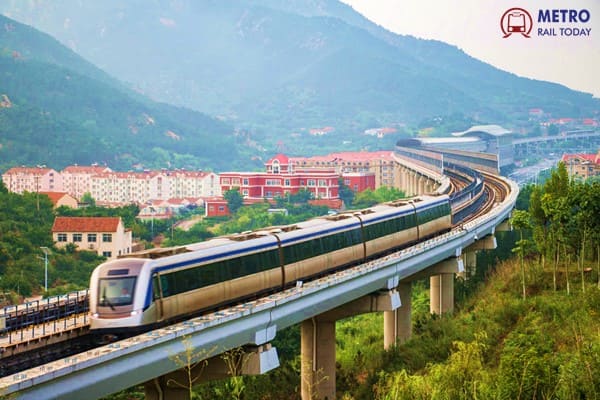 Route survey commences for ₹6,225 crore Bhubaneswar Metro Rail Project
Route survey commences for ₹6,225 crore Bhubaneswar Metro Rail Project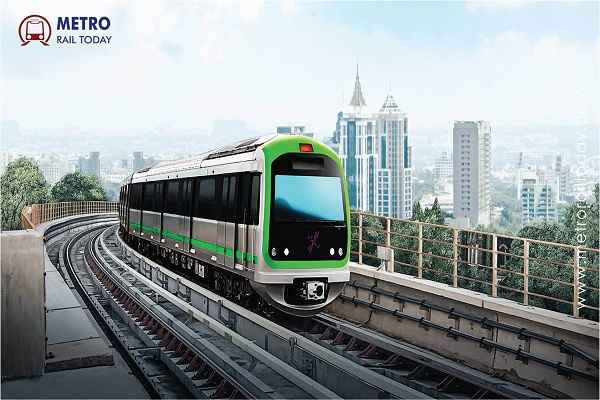 Eight firms bid for feasibility study of Bengaluru's Madavara-Tumakuru Metro Corridor
Eight firms bid for feasibility study of Bengaluru's Madavara-Tumakuru Metro Corridor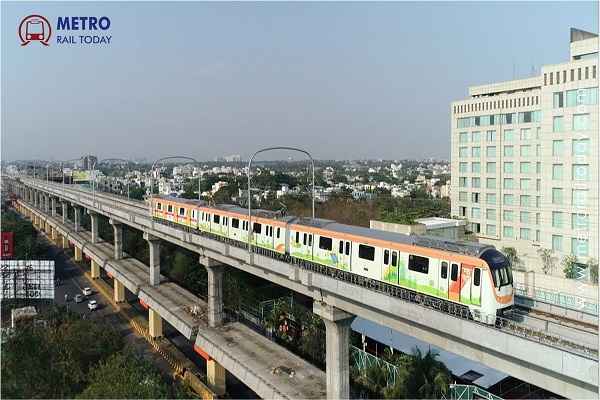 Two firms bid for Track Work Contract of Nagpur Metro Phase 2
Two firms bid for Track Work Contract of Nagpur Metro Phase 2 Derailing Integrity: Corruption Claims Hit Delhi Metro's Top Management
Derailing Integrity: Corruption Claims Hit Delhi Metro's Top Management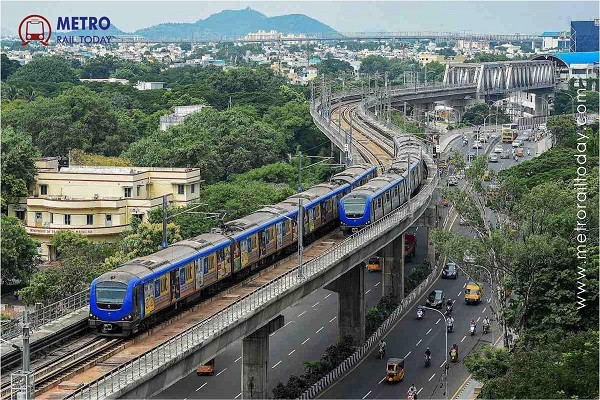 Six firms bid for DPR Consultancy for Chennai Metro's Koyambedu – Avadi Metro Line
Six firms bid for DPR Consultancy for Chennai Metro's Koyambedu – Avadi Metro Line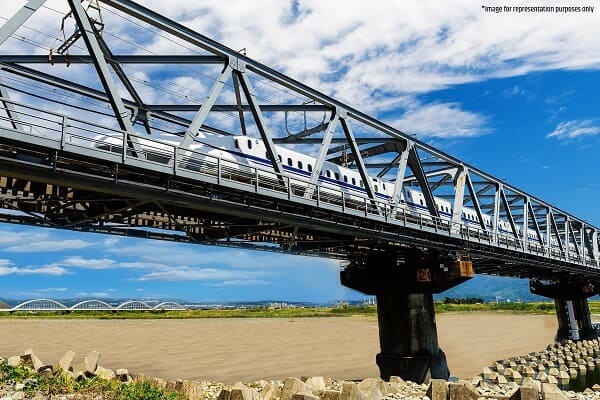 100-meter-long steel bridge launched on Mumbai-Ahmedabad High Speed Rail Corridor
100-meter-long steel bridge launched on Mumbai-Ahmedabad High Speed Rail Corridor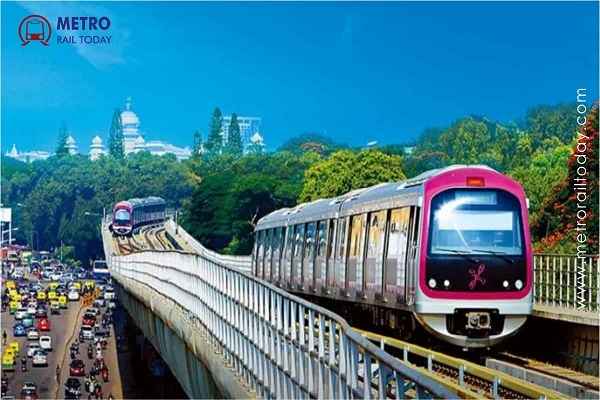 Bangalore Metro achieves record profit of ₹130 Crore in FY2023-24
Bangalore Metro achieves record profit of ₹130 Crore in FY2023-24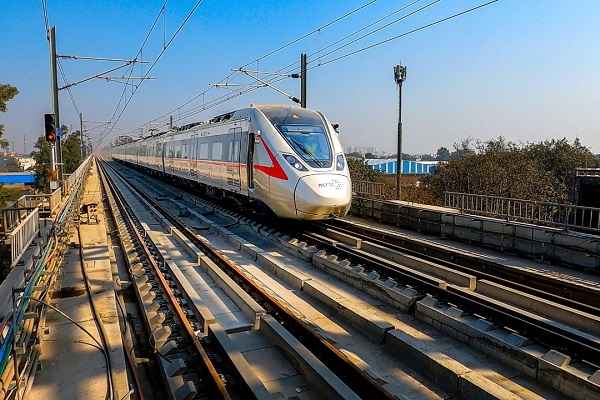 CEG Test House wins Geotechnical Investigation contract for Delhi-Dharuhera RRTS Project
CEG Test House wins Geotechnical Investigation contract for Delhi-Dharuhera RRTS Project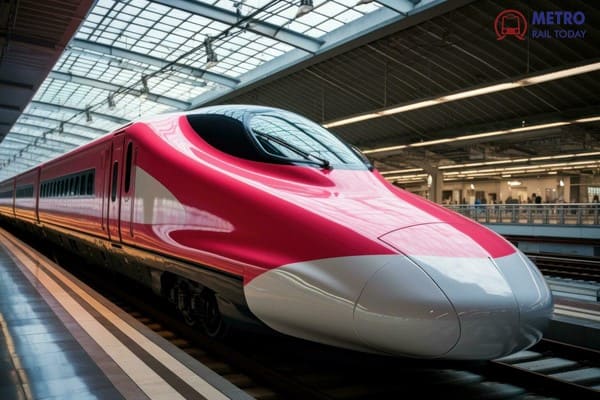 Two firms bid for ticketing system consultancy for Mumbai-Ahmedabad High Speed Rail Line
Two firms bid for ticketing system consultancy for Mumbai-Ahmedabad High Speed Rail Line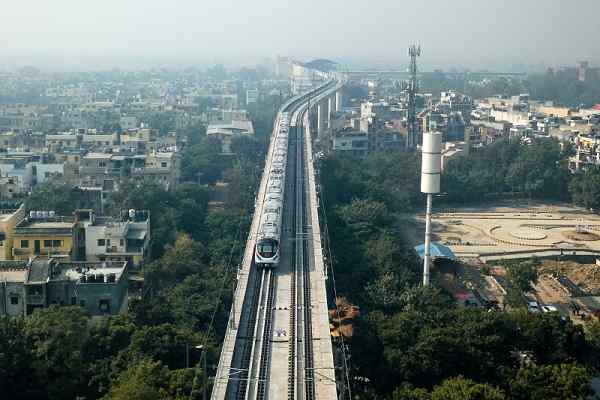 India aims to become the 2nd Largest Metro Rail Network in the World
India aims to become the 2nd Largest Metro Rail Network in the World
Kanpur Metro: In conversation with Kumar Keshav, Managing Director, UP Metro Rail Corporation
(Kumar Keshav, Managing Director, Uttar Pradesh Metro Rail Corporation)
Prime Minister Narendra Modi inaugurated the commercial run of first 9-km stretch of the Kanpur Metro Rail project on December 28, 2021 and Metro services for the public commenced from early morning of next day i.e. December 29, 2021.
In a recent interaction with Metro Rail Today, Kumar Keshav, Managing Director of Uttar Pradesh Metro Rail Corporation (UPMRC) shared his experience and talked on some unknown facts about Kanpur Metro Rail project. He also share the story of Kanpur Metro from the construction stage to commissioning of first priority 9-km section of the project.
First, kindly accept our heartiest congratulations for opening of Kanpur Metro services to the public within the timeline. How did you feel after completing the second major task of the metro rail project in Uttar Pradesh?
I am feeling happy and contented after the inauguration of the 9 KM priority corridor of Kanpur Metro. Our UPMRC team, contractors, consultants, vendors and labourers have displayed immense hard work in delivering the project within the stipulated timeline. I also thank the central government, state government and other local government agencies for supporting us in achieving this goal. The trial run of Kanpur Metro commenced on November 10, 2021 which is a significant achievement. This milestone has been achieved in a record time of less than 2 years.
Kanpur Metro is the fastest constructed metro in India and its revenue operations have been kick started on December 28, 2021 in just 2 Years 2 Months. After the commencement of commercial operations from IIT Kanpur to Motijheel, the work on the remaining 14.09 KM corridor from Chunniganj to Naubasta and Agriculture University to Barra-8 (8.6 KM) is going on at a fast pace. I am sure that we would commission both the corridors by end of year 2024.
The construction work on the 6 KM priority section of Agra Metro – Taj East to Jama-Masjid Metro Station is also going on at an expedited pace. In the priority corridor there will be 6 metro stations.
The Taj- East Gate, Basai, Fatehabad metro stations will be elevated and Taj Mahal, Agra Fort, Jama Masjid will be underground. The entire length of the Agra Metro Rail Project is 27 KMs.
My happiness increases when I see the smiles on the millions of passengers who travel by metro and it gives me gives me great satisfaction and contentment when I see them experience a secure, safe and comfortable public transport. My sole aim is to make the lives of the people better. In fact, offering sincere service to the nation and its people remains the sole motto of my life.
You have been associated with the rail & metro industry for more than 35 years, kindly share some information about your academic & professional journey?
I am a gold-medallist from IIT- Kanpur (M.Tech) and IIT-Roorkee (B.E.), took over as Managing Director of the Company (UPMRC) on 18th August, 2014 and soon commenced works on 27th September, 2014. I worked earlier as Director (Projects & Planning) at Delhi Metro Rail Corporation (DMRC) and have been credited with the successful completion and commissioning of various important corridors in Delhi Metro under the able guidance of Dr.E.Sreedharan. He held the prestige of the nation high during the XIXth Commonwealth Games, 2010 when he commissioned Central Secretariat -Badarpur Metro project on 3rd October, 2010 – just on the day of start of the Commonwealth Games - when approximately 70,000 people travelled by Delhi Metro to reach the main venue of the global sporting extravaganza - the Jawaharlal Nehru Stadium.
I have executed various projects in a record time. In this line, adoption of new initiatives and innovations, speed of deliverance within a stringent deadline and the sanctioned budget, have been ensured to deliver Lucknow Metro project within a stipulated timeline. To get in sync with the set of goals, similar line of action has been planned for Kanpur and Agra Metro Rail Projects.
I have chalked out different strategies and steered a team of professionals towards fastest completion of the ‘Priority Corridor’ of the Lucknow Metro project, within a record time of less than 3 years, a feat which no other metro project achieved in the past.
The 15 KMs corridor of Gorakhpur Metro Lite Rail also got approval from Public Investment Board on 29th November 2021 and in the coming months, the construction work may be inaugurated between Shyam Nagar to Madan Mohan Malviya College.
Most of the cities are facing issues in implementing metro rail projects due to covid pandemic, fund, policy and land related issues in India. Even, India's first & oldest Metro project i.e. Kolkata Metro is also working on snail's speed. Despite two waves of Covid, you were able to complete the Kanpur Metro project on time. How was it possible?
In-spite of two Covid waves; UPMRC team, vendors, contractors and labourers instilled their best endeavours to deliver the priority corridor of the Kanpur metro within the stipulated time line. UPMRC faced various hurdles pertaining to migration of labour workforce to their villages during COVID crisis. To address this issue, UPMRC in a proactive approach, constructed a labour colony inside casting yard that provided accommodation, kitchen and 24 hour medical facility to help them earn their living all the while living in a safe environment. This helped greatly in re-gathering the entire labour workforce and the construction work resumed after approvals from the government.
The necessary approvals were also expedited at a fast pace with the help of legal team, consultants and continuous support of the state and the central government. With an aim to commence the commercial operations of the Kanpur Metro, special emphasis was given to recruitment and training of human resource.
The newly recruited manpower was trained to handle technical operations. Psycho-metric tests were conducted in a record time and professional grooming training was imparted to prepare them for their job. As the result of this, UPMRC has been able to kick start the commercial operations of Kanpur Metro within the targeted time span.
In terms of rolling stock, the delivery was done in 60 weeks whereas the standard time for delivering the rolling stocks was 64 weeks. Timely delivery of rolling stocks was an achievement in itself. The components of the metro train which were earlier imported from foreign countries were manufactured and made in India.
The real time monitoring of the rolling stocks was done through online mode. The components were ordered from local vendors which led to the timely testing and placement of rolling stocks on the priority corridor. The hardware, heavy machines, maintenance machinery for refurbishing the wear and tear of the rolling stocks was installed in the depot in a record time. Besides, before the commencement of trial run and commercial operations; rigorous testing of braking system was performed exclusively at the in-built technical facility of depot. The credit for the installation of signalling equipments, braking system testing, third rail and other hardware goes entirely to the hardworking and dedicated team of UPMRC, vendors, contractors, labourers and consultants.
A fast track model for timely deliverance of the rolling stocks and other logistics was already developed by the team of planners, engineers and strategists in advance. This collective effort of planning and implementation of the strategies on the ground was hence forth pro-actively developed at an advance stage. This smart planning helped the team to turn the dream of running the metro in Kanpur into a reality.
The components like third rail bracket which were earlier imported from foreign vendors were ordered from local vendors. UPMRC thus complied well with the vision of Hon’ble Prime Minister Shri Narendra Modi’s ‘Atmanirbhar Bharat’ and Vocal for Local.
The Third rail traction power system was installed in a short span of time. Line charge up, work on track and traction was done simultaneously with meticulous planning and coordination.
The traction system approval from Ministry of Railways through RDSO was also obtained in due time by quick response to their queries.
We heard that you have adopted and applied some new innovations and technologies during construction and execution of the Kanpur Metro project to make it more sustainable, safer and energy-efficient. Kindly highlight some new innovations and technologies implemented in Kanpur Metro to make it unique from other metro projects? How is it different from the Lucknow Metro Rail project?
Yes, it is true that we have implemented various innovative techniques in the Kanpur project.
Double T-girder: Kanpur Metro is the first Metro project in the country to use Double T-girders for the construction of concourse level of elevated Metro stations. This innovation helped in achieving the milestone of construction of Concourse of all 9 Metro stations of the Priority Section from IIT Kanpur to Motijheel in a record time of 7 months and 17 days.
Twin Pier Cap: For the first time in India, the innovative use of Twin Pier Cap has been done instead of portal arrangement to provide support to Depot Exit/ Entry line and Automatic Coach Wash Plant under Kanpur Metro Rail Project. This has helped in creating space for smooth flow of traffic and also enhancing the aesthetic beauty of the constructed structure.
Inverter in the Third Rail Traction System: Presently there are Third Rail ‘DC’ Traction Systems in Bangalore, Kochi, Ahmedabad, Kolkata and Gurgaon Rapid Metro projects in India and now Kanpur Metro trains will also operate with the same traction system. The DC traction system of Kanpur will be different and special from the rest because for the first time in India, under the Kanpur Metro project, the Third Rail DC Traction System will have a special inverter, which converts the energy generated by the braking of the train from DC to AC, which will be used in metro systems.
In DC traction system, manual Short circuiting device is used in Bangalore, Kochi, Ahmedabad, Kolkata and Gurgaon Rapid Metro projects in India for ensuring safety during maintenance. Kanpur Metro will be the first metro system in India to use automatic Short Circuiting and Earthing device during maintenance which will be operated remotely from Operation Control Centre (OCC) through SCADA.
Camera in Rolling Stock for monitoring of Third Rail Traction System: Rolling stock of the Kanpur Metro Rail Project is the first rolling stock in the country, which will be equipped with the camera for monitoring of third rail system. This will help in surveillance and maintenance of the third rail in the metro system.
The Kanpur Metro Polytechnic Depot is equipped with advanced technology and all necessary systems for stabling of the metro trains and their maintenance. The metro trains are monitored and operated from the Operations Control Centre set up in the Depot. The Depot is equipped with zero discharge facility, which means that the waste water being generated in the Depot will not be disposed; rather it will be recycled completely and will be used for various purposes. Keeping in mind the idea of treating every drop of waste water, a STP (Sewage Treatment Plant) with a capacity of 10 thousand litres per day and an ETP (Effluent Treatment Plant) with a capacity of 70 thousand litres per day has been constructed for the same.
The trains for Kanpur Metro have been made using advanced and ultra-modern technology. The safety and comfort of the passengers has been kept at utmost importance. The trains are equipped with CBTC (Communication Based Train Control) system, which is to be used in ATO (Automatic Train Operation) mode. This will ensure energy conservation and protected train operation. Apart from this, the trains will also have carbon-dioxide sensor based air-conditioning system, which will aid in saving energy during metro operations.
Kanpur Metro’s 9 km long priority corridor has been certified with the ISO 14001 certification for environment management and with ISO 45001 certification for safety management.All stations of priority corridor are green certified with platinum rating of IGBC (Indian Green Building Council). The ISO Certification, execution of the project all procedures pertaining to environment conservation and safety management are being followed as per set protocols. Along with this, timely review is also conducted to ensure that safety and environment issues arising during project execution are being redressed and mitigated. After all the points have been catered to, ISO Certifications are awarded and Kanpur Metro Project has been successful in obtaining ISO certification.
Including the stations of both the corridors of Kanpur Metro, Metro Depot and 32.4 km long viaduct, it is estimated that 15 lakh litres of water will be conserved through rain water harvesting. Every second span in the viaduct will have an arrangement of directing rainwater in the pit situated in the median. Around 180 such rainwater conservation pits have been proposed for the entire priority corridor.
The trains for Kanpur Metro Project are equipped with ‘Regenerative Breaking’ technique, which will save up to 42 percent of energy. For instance, if there are 1000 units of energy being consumed for train operation, the train will restore 420 units of energy through regenerative breaking system, which can be used for train operation again. The lifts will also be equipped with regenerative breaking system, and will save up to 37 percent of energy. To ensure maximum energy conservation, all metro stations and depot will have 100 percent LED lighting. Solar panels are also to be installed in the stations and the depot premises.
Elaborate plans and strategies were adopted to complete the construction work of Kanpur Metro Rail Project in set time. For instance, in Kanpur, a combined contract was awarded for Metro Trains and Signalling system, which lead to decreased time in carrying out the tendering process.
In Lucknow Metro, you have adopted the 25 KV AC OHE traction system while 750VDC Third Rail traction system has been adopted for Kanpur Metro. What are the reasons behind adopting a different traction system for the Kanpur Metro? What are the major benefits of 750VDC over 25KV AC OHE traction systems?
With the revolution and advancement in the Railway’s industry, the utilization and enhancement in the traction system has also upgraded with respect to the time.
In Uttar Pradesh, Kanpur Metro became the first to use the top contact third rail methodology, whereas the other projects like Lucknow Metro, Noida Metro have used OHE (Over Head Electrification) as their means to supply electricity.
A third rail is a method of providing electric power to a railway train, through a continuous rigid conductor placed alongside or between the rails of a railway track. It is used typically in a mass transit or rapid transit system, which has alignments in its own corridors, fully or almost fully segregated from the outside environment. In most cases, third rail systems supply direct current electricity (750 Volts).
On most third rail systems, the conductor rail is placed outside of the running rails and the electricity is transmitted to the train by means of a sliding shoe, which is held in contact with the rail. A third rail system offers a number of benefits, including:
- eradicating the impact of electromagnetic interference on electrical components
- reducing maintenance costs because power supply equipment is virtually maintenance-free with only regular inspections and cleaning required, and
- offering high efficiency – a 750V DC system offers a power supply transmission efficiency average of 92-94%.
Few of the advantages, why third rail is used in Kanpur Metro are:
- Third rail is cheaper to construct (Helped in timely meeting of the target delivery date)
- Easy to build (no additional pole or wire is required)
- Simple to maintain (no use of additional vehicle like CMV, no additional maintenance of weight, due to thermal expansion or contraction)
- Efficient for low voltage systems (Runs over 750 Volts, DC).
- Good for short runs.
- There is much less visual intrusion on the environment.
- It faces no intrusion due to activities like kite-flying, etc. and thus, does not hamper the operations.
Kanpur Metro has received overwhelming response from the public. What are the future plans for Kanpur Metro and when will the entire phase complete?
Kanpur is a densely populated industrial city of Uttar Pradesh. With the population of over 35 lacs, it is going to benefit the residential areas, schools, hospitals, colleges, universities and businesses operating in array of segments. Kanpur metro will decongest the areas witnessing traffic congestion. It will save time and money of the commuters.
The pollution level will come down; thus, cutting down the carbon foot print from the air. It is safe and secure mode of transport for children and women. With state-of-the-art infrastructure, Kanpur metro will offer comfort and world class services to the people of Kanpur.
As we know, we are living in the times when pandemic has caused havoc in the world and we are taking stringent precautionary measures to ensure safety of the people. The trains and stations are sanitized regularly. Markings are made to ensure social distancing in the trains and metro stations. In comparison to other modes of transport, it is definitely the safest way to travel from one destination to another.
Kanpur Metro team has taken an important step in the direction of timely execution of the project by inaugurating the construction of D-wall panel for Naveen Market Underground Station and Casting work of pre-cast structures for Underground Section -1 in HBTU casting yard, on October 11, 2021. Tunnel construction work using the Tunnel Boring Machine will also commence very soon.
Are you also planning to launch 'Smart Card' for Kanpur Metro passengers in line with GoSmart Card being used by Lucknow Metro commuters?
Yes, in a few months, the ‘Smart Card’ for Kanpur Metro will be launched by UPMRC. The smart card holders will get 10 percent discount and journey by a metro will come easy on pocket for the passengers.
Anything else, you want to share with us in respect to upcoming metro rail projects in Uttar Pradesh?
On November 29, 2021, Public Investment Board approved the phase one of Gorakhpur Metro Lite Rail Project. After PIB’s approval, the proposal will be further sent to Central –Cabinet. Under the approved phase 1 of the Gorakhpur Metro Rail Project of 15.14 KMs; 14 metro stations have been planned to pass through Shyam Nagar to Malviya Engineering College. This corridor will ease out the pressure on densely populated pockets of Gorakhpur. A depot will also be developed near Shyam Nagar Metro Station where real time management of metro operations and its maintenance will be done exclusively.
According to the DPR, Rs 2670.37 Cr will be the estimated cost for constructing Corridor – 1 of Gorakhpur Metro Rail Project. The entire corridor will be elevated. This project will be funded jointly through Equity share contribution of Central Government and State Government. In addition, soft loans will be obtained from bilateral/multilateral - external financial institutions and the same contribution of Rs 200 crore will be made by the local bodies.
Considering the increasing population graph and routine traffic problems; the State Government envisioned a ‘Smart Transportation System’ in the form of Metro Rail Lite. The Metro Rail Lite proposed for Gorakhpur will have 3 low floored coaches with the transportation capacity of carrying 400 passengers in a single commutation ride. The Metro Lite Rail will draw power from third rail and its maximum speed will be 60 KMs per hour.
The implementation of the Gorakhpur Metro project will be done by the Uttar Pradesh Metro Rail Corporation (UPMRC) andwill be 4thsuch project in the league which will be operationalised under the auspices of Uttar Pradesh Metro Rail Corporation (UPMRC).
(This interview is first appeared in January 2022 Issue of Metro Rail Today Magazine.)




